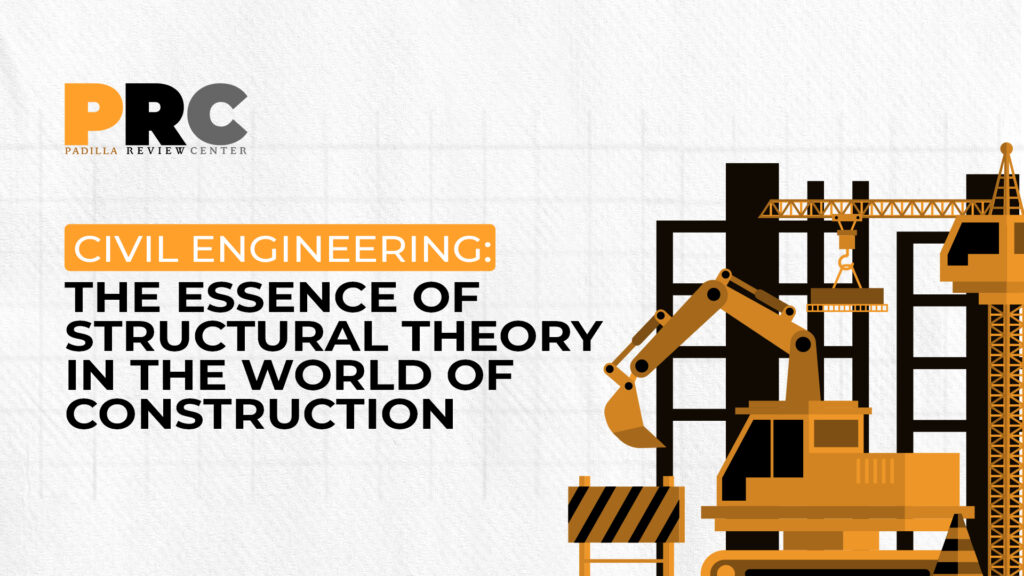A part of being a Civil engineer is knowing the theory of structures. Having this theory: structural engineering is born. But what made this structural theory functional to become a civil engineer?
In this article, we give you brief introductions to the theory of structures: analysis and design.
But first, we should know what Civil Engineering is before we move on to its structural theory.
What is Civil Engineering?
Considered the second-oldest professional engineering discipline after military engineering is civil engineering. It deals with the design, construction, and maintenance of the physical and natural built environment, including public works and the private sector.
Structural Engineering
A sub-discipline of civil engineering that mainly focuses design the bones and muscles that create the form and shape of structures. It is a specialization within civil engineering dealing with structures analysis and design that support or resist loads.
Want to know more about the difference between civil engineering and structural engineering? You can read it here.
Theory of Structures
The theory of structures is a field of knowledge about determining the effect of structure load. But sometimes, other programs refer to it as structural analysis.
In application, the theory of structures focuses on the computation of internal forces, stress, deformation or displacement, stability, support reactions, accelerations, and velocity of load-bearing structures.
The result of the analysis is applied to know the behavior and strength of the structures when in use. Respectively, structural analysis is a part of structural design.
Therefore, the theory of structures has two parts: structural analysis and structural design.
Structural Analysis
Structural analysis is the examination of the response of structures to specified random external loads. It is the determination of forces at any point or member of the given structure when subjected to certain excitation.
In other words, finding internal forces (axial force, shear force, moment), stress, deformation or displacement, stability, support reactions, accelerations, and velocity in a structure under applied load conditions.
Structural Design
Structural design is the application of structural analysis to ensure buildings and other structures can support all loads and resist all constraining forces.
It deals with selection and design of suitable sections to resist these forces so that the stresses and deformations developed in the structure due to these forces are within permissible limits. It is to know the safety and economical specifications of a building sufficient to carry the load.
In other words, the cross-sectional dimension, grade of material, and amount of reinforcement necessary to withstand the internal forces we have got from structural analysis.
What is a Structure?
A structure is a system of connected members used to support loads.
Types of Structures:
- Beams – Usually made of straight prismatic members that span in between support.
- Columns – vertical members used to resist axial compressive loads.
- Trusses – Arrangements of straight members connected in the end.
- Frames – Composed of beams and columns that are either pin or fixed-connected.
- Arches – achieve their strength in compression.
- Cables – flexible and carry their loads in tension.
- Shear walls – maybe a planar solid or coupled and usually provided alongside the frames.
Final Thoughts
The ultimate aim of learning the theory of structures is to help design efficient, elegant, and economic structures. Analysis assists the designer in choosing the right type of sections consistent with the economy and safety of the building. Structural analysis’s purpose is to determine the reactions, internal forces, such as axial, shear, bending, and torsional, and deformations at any point of a given structure caused by the applied loads and forces.
The bottom point is civil engineering should know the theory of structures, especially if you want to specialize in being a structural engineer. You can read more books or enroll in school to learn more about them. But if you desire to focus on this study, many review centers offer this program.
DID YOU KNOW THAT THERE IS AN AFFORDABLE REVIEW CENTER THAT OFFERS A THEORY OF STRUCTURES PROGRAM? HEAR US OUT!
If you are looking for a review center that offers Theory of Structures, Padilla Review Center is one of those review centers that have this kind of program. We cover affordable programs with experienced instructors and a warm community. You can avail of our promo here.

